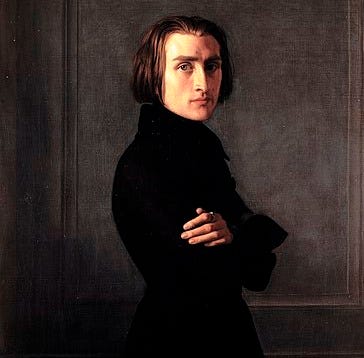|
 |
It’s Called Classical Music Because It’s Classic
In this week’s Editor’s Corner, Christina Behe reflects on why classical music and other art forms considered by many to be obsolete persist in contemporary life
The holiday season is in full swing, and I’m in the throes of all the usual activities: shopping, wrapping, decorating, card-writing and preparing to visit family. It’s a busy time for most people, but for me as an amateur musician, there’s an additional layer of activity: holiday concerts. This weekend alone I’ll be in three performances, two with my community band and one with my church choir. And it’s got me thinking about the role of tradition and nostalgia in the arts. Why do art forms that are arguably obsolete—such as concert bands, symphony orchestras and ballets—persist in contemporary culture? And why do they suddenly get more popular in December?
To answer the second question first, I suspect nostalgia plays a prominent role in the popularity of old-school art forms during the holidays. There’s something about the weather getting colder and darker (in the Northern Hemisphere, at any rate) and the year coming to an end that focuses our attention on the comforts of the familiar. As Discourse columnist James Lileks puts it, nostalgia “confirms our opinion of the Golden Past.”
Further, Christmas places a lot of emphasis on tradition. Families gather to cook the same foods, tell the same stories and engage in the same cultural rituals, such as lighting candles and singing carols. And as part of their holiday celebrating, they often take in a performance of Handel’s “Messiah” or “The Nutcracker,” even if they never listen to classical music or go to a concert hall or the ballet at any other time of the year.
Speaking of classical music, it’s the perfect example of an “obsolete” art form that has somehow persisted to the present day. It was once an incredibly popular type of entertainment, both in concert halls and (on a smaller scale) in people’s homes. Some musicians were so successful and popular that they became international celebrities: In the late 18th century, Mozart played before royalty and toured throughout Western Europe, while in the 19th, virtuoso pianist Franz Liszt had his audience “shrieking, sobbing, and swooning” over his performances, much as later audiences would swoon over Elvis and the Beatles.
Today, while great composers such as Mozart and Beethoven still have a certain cultural cachet, even the best classical musicians are unknown by most of the public. And of course, classical music has been supplanted by more modern genres such as rock, pop and hip-hop. Yet it hasn’t completely disappeared from our lives, either. Most localities still have a classical radio station, many cities have symphony orchestras that give concerts throughout the year, and plenty of kids taking piano or violin lessons still learn the traditional classical repertoire.
This same paradox of obsolescence and persistence applies to many other art forms as well. Live theater was once the only way of seeing a story acted out; now we have movies and TV, and perhaps even these are being supplanted by YouTube and TikTok. As a result, plenty of people no longer attend plays—but theater still exists at many levels, from school drama programs to community theater to Broadway and the West End. Likewise, portrait painting has largely been replaced by the selfie, but painters (yes, even portrait painters) are still around.
So what accounts for the persistence of “obsolete” forms of art? In nearly all cases, the newer art forms are easier or more convenient in some way, thanks in part to modern technology. Instead of painstakingly painting a beautiful sunset, we can snap a quick pic on our phone. Rather than leaving our homes and paying the equivalent of a nice dinner out to attend a professional performance of Handel’s “Messiah,” we can listen to it on Spotify from the comfort of our couches. Or better yet, listen to a three-minute pop song instead—a much less involved option for our easily distracted society than Handel’s two and a half hour-long oratorio.
I have a twofold theory about why old art forms such as classical music persist. First, they’re good—plain and simple. The beauty of a Mozart symphony or the Hallelujah Chorus is hard to deny, and these works still impart joy and pleasure, even to our modern ears. And second, they are conducive to (or, in the case of theater, require) live performance. Any music or dance or drama enthusiast will tell you that a recording just isn’t the same as being there in the room. There’s an intangible energy, a communication between performer and audience, a sense of immediacy and community, that is lost in the recording.
None of this is meant to criticize contemporary forms of art and pop culture. They too are contributing to the world’s store of knowledge and beauty. But they aren’t replacing (and indeed shouldn’t replace) the “obsolete” artwork that came before. Rather, they’re responding to, commenting on and complementing that work. Despite technological advances and changing society-wide preferences, there’s room enough for both old and new.
Meanwhile…
What I’m watching: In keeping with the nostalgia theme, for the past few weeks I’ve been rewatching “Daria.” For you unfortunates who aren’t familiar with the show, it’s a half-hour animated TV series following teen misanthrope Daria and her misadventures in the generic suburban town of Lawndale. The show originally aired on MTV between 1997 and 2002, and it can now be streamed on Paramount Plus.
I watched some of “Daria” when it first aired and I was roughly Daria’s age. The show spoke to me and many other teens who admired the titular character: She’s smart, cynical and antisocial by choice, and she always has the perfect sarcastic one-liner. “I don’t have low self-esteem,” she assures her parents in the pilot episode. “I have low esteem for everyone else.”
But upon rewatching the show, I’ve discovered a bit more depth and vulnerability to Daria. On rare occasions, she reveals she’s not always as coolly detached as she appears; her aloof behavior is often a response to her fear of abandonment and rejection. So while “Daria” has plenty of broad and silly moments—it is, after all, a cartoon comedy, not to mention a “Beavis and Butt-Head” spinoff—there’s also a surprising amount of heart.
Latest Stories
Daniel Kochis, “Is Italy’s Georgia Meloni Now Europe’s Most Important Leader?”
Christian Schneider, “Sorry, Social Media Is Never Getting Any Better”
John Mueller, “Partitioning Ukraine: An Idea Whose Time Has Come?”
John Mac Ghlionn, “Is AI Compatible With the American Dream?”
Jennifer Tiedemann, “The 2024 Election Deals a Big Blow to Identity Politics”
Satya Marar, “Pharmacy Benefit Managers Negotiate Lower Drug Prices for Millions of Americans”
From the Archives
Michael J. Ard, “Doomsayers Are Everywhere, But Is Our Democracy Truly on the Skids?”
Robert Tracinski, “The Economic Nationalists’ Banana Republic”
Brian Knight, “If You Use a Bank Account, Don’t Get on the Wrong Side of the Government”
If you enjoyed this piece, please consider giving to Discourse. Your contribution will help us to continue offering all readers, free of charge, the thoughtful and diverse content that you’ve come to love.
You’re currently a free subscriber to Discourse .

